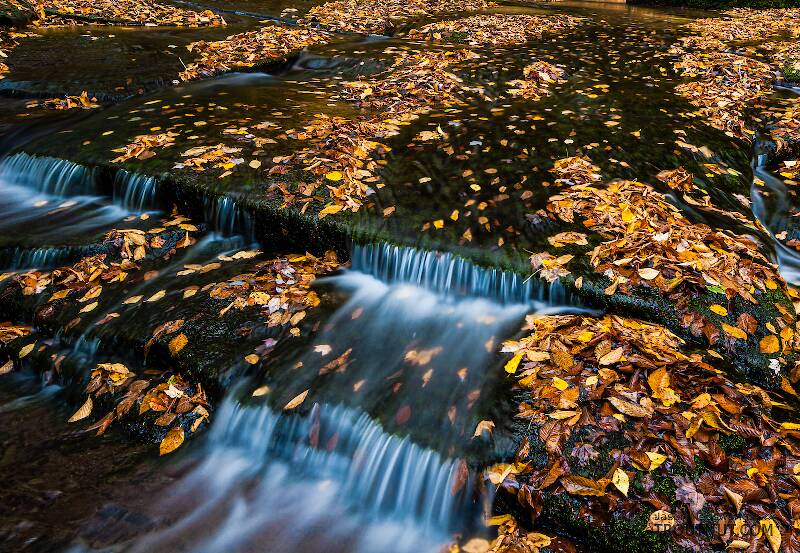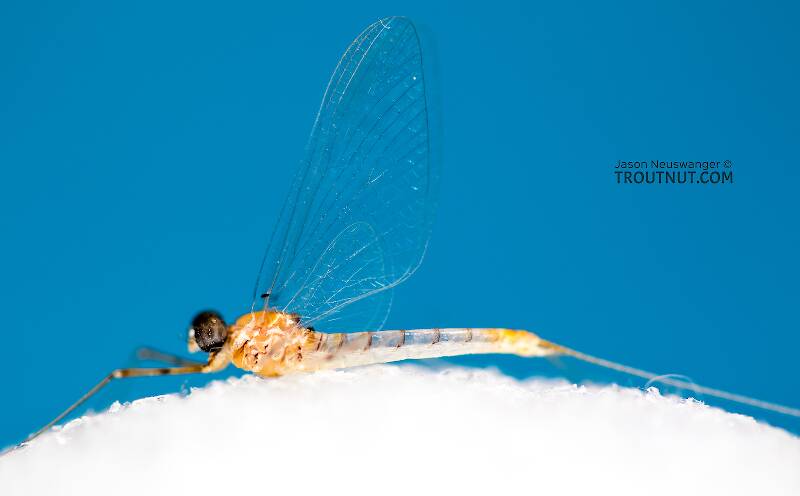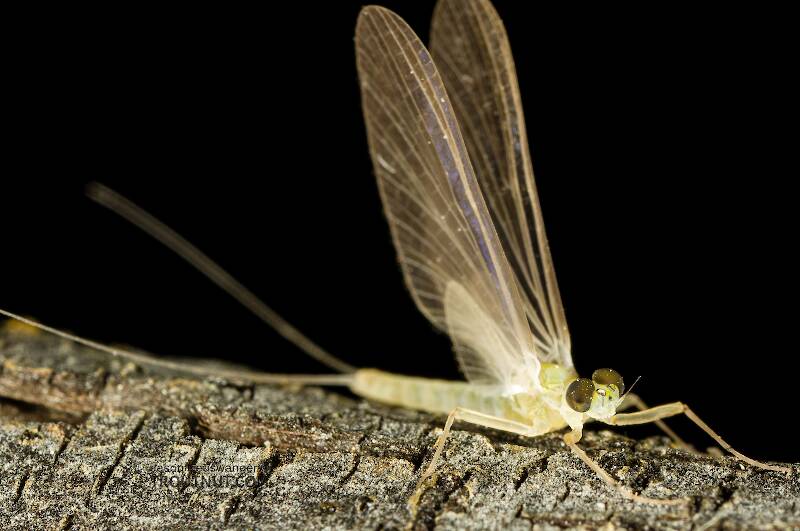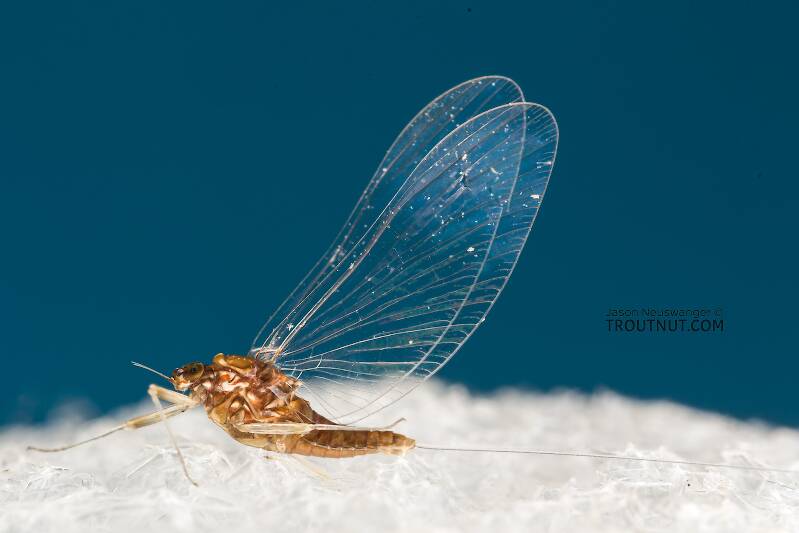
Salmonflies
Pteronarcys californica
The giant Salmonflies of the Western mountains are legendary for their proclivity to elicit consistent dry-fly action and ferocious strikes.
Featured on the forum

I caught this tiny larva without a case, but it seems to key pretty clearly to to Glossosomatidae. From there, the lack of sclerites on the mesonotum points to either Glossosoma or Anagapetus. Although it's difficult to see in a 2D image from the microscope, it's pretty clear in the live 3D view that the pronotum is only excised about 1/3 of its length to accommodate the forecoxa, not 2/3, which points to Glossosoma at Couplet 5 of the Key to Genera of Glossosomatidae Larvae.

Troutnut is a project started in 2003 by salmonid ecologist Jason "Troutnut" Neuswanger to help anglers and
fly tyers unabashedly embrace the entomological side of the sport. Learn more about Troutnut or
support the project for an enhanced experience here.
This topic is about the Insect Order Ephemeroptera
Mayflies may be the most important insects for trout anglers to understand. They are an ancient order of insects, famous outside the fly-fishing world for their fragile beauty and short adult lifespan, often a single day to mate and die. The mayfly's poignant drama attracts poets and anglers alike, but anglers make the most of it.Mayflies live more than 99% of their lives as nymphs on the river or lake bottom, filling many crucial roles in freshwater ecosystems as they feed and grow. They eventually emerge from the water as winged sub-adults called "subimagos" by scientists and "duns" by anglers. Duns evolved to be good at escaping the water, with a hydrophobic surface and hardy build, but they are clumsy fliers. Within a day or two they molt one last time into "imagos" or "spinners," the mature adults, a transformation captured in this photo series of a dun molting into a spinner. They have longer legs and tails, and sleeker, more lightweight bodies, giving them the airborne speed, agility, and long grasp they need for their midair mating rituals. They are usually darker than the duns and have shinier, more transparent wings. They die within minutes or hours after mating.
Example specimens
Deligon
Posts: 3
Posts: 3
Deligon on Sep 8, 2008September 8th, 2008, 3:42 pm EDT
I have had using a fly a friend turned me on to ,Isonychia parachute.
If iso nymphs hatch into duns on rockswood is the dry fly (parachute)
the spinner stage? all I know is it works,
I have fished my whole life but this only my second year fly fishing.
I fish the Hiwassee and Elk in Tennessee.
The more I learn the more I discover I don't know.
If iso nymphs hatch into duns on rockswood is the dry fly (parachute)
the spinner stage? all I know is it works,
I have fished my whole life but this only my second year fly fishing.
I fish the Hiwassee and Elk in Tennessee.
The more I learn the more I discover I don't know.
GONZO on Sep 9, 2008September 9th, 2008, 7:55 am EDT
Deligon,
Although the appearance of their dark nymphal shucks on streamside rocks is often a familiar sign of an Isonychia emergence, they have the ability to emerge in the water as well. Conditions may dictate that one or the other method might predominate, but I doubt that either method is employed exclusively. Many anglers find that imitations of the duns are attractive to trout, even at times when most emerge on streamside rocks. This may be due to their lengthy emergence, often consisting of multiple groups or "cohorts." In streams with good populations, the trout seem very familiar with Isonychia and readily take the imitation of all stages.
Although the appearance of their dark nymphal shucks on streamside rocks is often a familiar sign of an Isonychia emergence, they have the ability to emerge in the water as well. Conditions may dictate that one or the other method might predominate, but I doubt that either method is employed exclusively. Many anglers find that imitations of the duns are attractive to trout, even at times when most emerge on streamside rocks. This may be due to their lengthy emergence, often consisting of multiple groups or "cohorts." In streams with good populations, the trout seem very familiar with Isonychia and readily take the imitation of all stages.
Quick Reply
Related Discussions
Topic
Replies
Last Reply
12
Oct 10, 2007
by Taxon
by Taxon
Re: Big Green River, Wisconsin, late September
In the Mayfly Species Baetis brunneicolor by Admiralb
In the Mayfly Species Baetis brunneicolor by Admiralb
1
Sep 30, 2013
by Entoman
by Entoman




